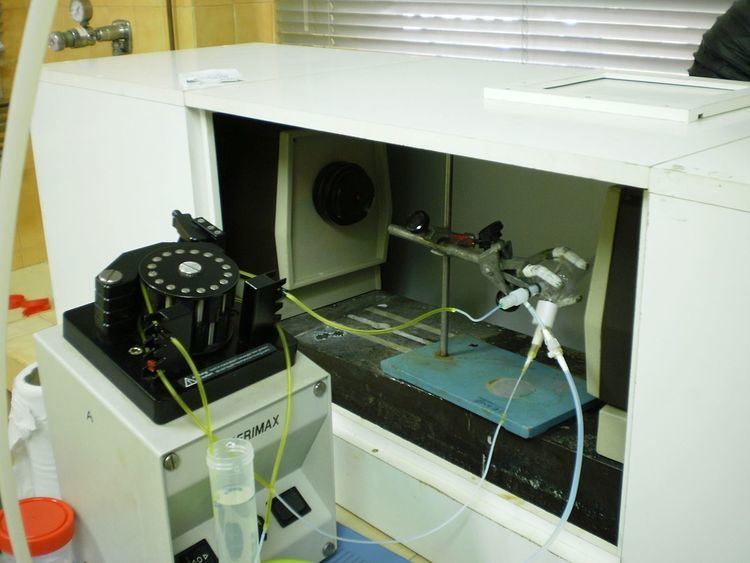 | ||
Laser diffraction analysis, also known as laser diffraction spectroscopy, is a technology that utilizes diffraction patterns of a laser beam passed through any object ranging from nanometers to millimeters in size to quickly measure geometrical dimensions of a particle. This process does not depend on volumetric flow rate, the amount of particles that passes through a surface over time.
Contents
Operation
Laser diffraction analysis is based on the Fraunhofer diffraction theory, stating that the intensity of light scattered by a particle is directly proportional to the particle size. The angle of the laser beam and particle size have an inversely proportional relationship, where the laser beam angle increases as particle size decreases and vice versa.
Laser diffraction analysis is accomplished via a red He-Ne laser, a commonly used gas laser for physics experiments that is made up of a laser tube, a high-voltage power supply, and structural packaging. Alternatively, blue laser diodes or LEDs of shorter wavelength may be used. Angling of the light energy produced by the laser is detected by having a beam of light go through a suspension and then onto a sensor. A lens is placed between the object being analyzed and the detector's focal point, causing only the surrounding laser diffraction to appear. The sizes the laser can analyze depend on the lens' focal length, the distance from the lens to its point of focus. As the focal length increases, the area the laser can detect increases as well, displaying a proportional relationship. A computer can then be used to detect the object's particle sizes from the light energy produced and its layout, which the computer derives from the data collected on the particle frequencies and wavelengths.
Uses
Laser diffraction analysis has been used to measure particle-size objects in situations such as:
Comparisons
Since laser diffraction analysis is not the sole way of measuring particles it has been compared to the sieve-pipette method, which is a traditional technique for grain size analysis. When compared, results showed that laser diffraction analysis made fast calculations that were easy to recreate after a one-time analysis, did not need large sample sizes, and produced large amounts of data. Results can easily be manipulated because the data is on a digital surface. Both the sieve-pipette method and laser diffraction analysis are able to analyze minuscule objects, but laser diffraction analysis resulted in having better precision than its counterpart method of particle measurement.
Criticism
Laser diffraction analysis has been questioned in validity in the following areas:
